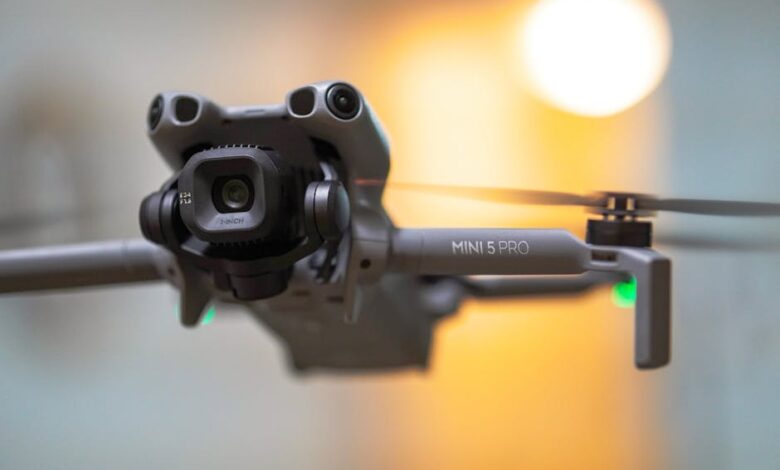Your Delivery Robot Is Here

Your Delivery Robot Is Here
Estimated reading time: 5-6 minutes
- Delivery robots are no longer futuristic but an increasingly common reality, driven by advancements in AI and sensor technology.
- They offer unparalleled efficiency and cost reduction in last-mile delivery, with accelerated adoption due to the global pandemic.
- Their rise sparks critical discussions about potential job displacement, urban integration challenges, and ethical considerations like data privacy.
- Businesses, individuals, and policymakers must proactively strategize, upskill, and plan for harmonious coexistence to leverage their potential.
- Successful integration requires thoughtful engagement, adaptation, and continuous dialogue to ensure that as robots roll out, humanity thrives alongside them.
- Your Delivery Robot Is Here
- The March of Autonomous Deliveries: More Than Just a Novelty
- Navigating the Human Element: Jobs, Ethics, and Integration
- Preparing for an Autonomous Future: Actionable Steps
- Conclusion
- Frequently Asked Questions
- What are delivery robots?
- How have delivery robots evolved?
- What impact do delivery robots have on jobs?
- What are the urban planning challenges with delivery robots?
- What ethical considerations are associated with delivery robots?
- How can businesses prepare for autonomous delivery?
- How can individuals adapt to the rise of delivery robots?
- What role do cities and policymakers play in integrating delivery robots?
The gentle hum of an electric motor. A compact, wheeled vehicle navigating the sidewalk with a package nestled safely inside. This isn’t a scene from a futuristic film; it’s an increasingly common sight in cities worldwide. The era of autonomous delivery robots isn’t just dawning; it’s already here, reshaping the landscape of logistics, commerce, and daily life.
For years, the concept of robots bringing goods to our doorsteps felt like a distant fantasy, confined to sci-fi novels and speculative documentaries. Yet, spurred by advancements in artificial intelligence, sensor technology, and a global demand for faster, more efficient service, these tireless automatons are steadily rolling out. From groceries to hot meals, parcels to prescriptions, the promise of instant, autonomous delivery is transforming expectations and challenging our understanding of convenience.
This technological leap isn’t without its complexities. As these mechanical couriers become more prevalent, they spark vital conversations about urban infrastructure, employment, and the evolving relationship between humans and machines. The arrival of delivery robots signals a pivotal moment, demanding our attention and proactive engagement to harness their potential while mitigating unforeseen challenges.
The March of Autonomous Deliveries: More Than Just a Novelty
The journey from conceptual drawings to functional robots has been rapid and iterative. What began with experimental prototypes has evolved into robust, commercially viable solutions. Companies are pouring significant investment into refining these systems, driven by the compelling advantages they offer: unparalleled efficiency, the potential for significant cost reduction in last-mile delivery, and the ability to operate continuously, unfazed by weather or traditional labor constraints.
These robots come in various forms, each tailored for specific environments and tasks. Some are small, ground-based units designed to navigate sidewalks and crosswalks, ideal for delivering food or small packages within a few miles. Others are larger, truck-like vehicles operating on roads, or even aerial drones capable of swift air delivery to more remote locations. Each iteration brings improvements in obstacle avoidance, battery life, and payload capacity, making them more versatile and reliable.
The pandemic, in particular, accelerated the adoption curve for autonomous delivery. With heightened concerns about human-to-human contact and a surge in e-commerce, the demand for contactless and automated solutions skyrocketed. This pushed many companies to fast-track their robot programs, turning once experimental trials into full-scale deployments. As a testament to this rapid evolution, consider that:
On this episode of Uncanny Valley, we introduce you to DoorDash’s new delivery robot and discuss what the growing robot population means for humans.
This isn’t just about a new product; it’s about a fundamental shift in how goods move from seller to consumer, impacting everything from urban planning to our daily routines.
These systems leverage sophisticated GPS, LIDAR, cameras, and machine learning to understand their environment, plot optimal routes, and safely interact with pedestrians and traffic. The result is a delivery network that promises not just speed, but also predictability and scalability, attributes that are invaluable in today’s fast-paced economy.
Navigating the Human Element: Jobs, Ethics, and Integration
While the benefits of autonomous delivery are clear, the introduction of a growing robot population raises profound questions about its impact on human society. Perhaps the most immediate concern is the future of jobs, particularly for those in the logistics and service industries who currently perform last-mile delivery. Will robots displace human drivers en masse, or will they create new roles requiring different skills, such as robot maintenance, remote operation oversight, and data analysis?
Many proponents argue that automation will shift human labor to more complex, creative, or supervisory roles, freeing people from repetitive or physically demanding tasks. However, this transition requires significant investment in reskilling and education to ensure a smooth adaptation for the existing workforce. It’s a conversation that needs to move beyond simple replacement versus creation, to focus on strategic workforce planning and social safety nets.
Beyond employment, integrating delivery robots into urban environments presents a unique set of challenges. Sidewalks and public spaces, traditionally designed for human movement, must now accommodate these new automated users. This prompts questions about safety, accessibility for people with disabilities, and urban aesthetics. Who is liable if a robot causes an accident? How do we ensure these robots operate respectfully and efficiently without impeding pedestrian flow or creating new forms of urban clutter? Cities like Milton Keynes in the UK have been early adopters, with Starship Technologies’ robots becoming a common sight, navigating public pathways and delivering groceries, demonstrating that coexistence is possible with careful planning and public acceptance.
Ethical considerations also loom large. Data privacy, for instance, becomes a significant concern as robots collect vast amounts of environmental data. Ensuring these systems are secure and transparent in their operations is paramount. Moreover, the psychological impact of interacting with autonomous agents in our daily lives, and the potential for public distrust or even hostility, requires careful consideration and proactive communication from companies and policymakers.
Preparing for an Autonomous Future: Actionable Steps
The advent of delivery robots is not a distant future event; it’s happening now. To thrive in this evolving landscape, proactive steps are essential for businesses, individuals, and governing bodies alike. Here are three actionable steps to consider:
-
For Businesses: Strategize and Integrate Smartly.
Instead of viewing autonomous delivery as a threat or a niche, businesses should evaluate how it can complement their existing operations. Begin by conducting feasibility studies to identify routes and products best suited for robot delivery. Explore partnerships with robot manufacturers or service providers rather than attempting to build proprietary systems from scratch. Focus on integrating these solutions into your broader logistics strategy to enhance efficiency, reduce costs, and offer new customer experiences, such as faster or more flexible delivery windows. Consider pilot programs in specific areas to gather data and fine-tune your approach before scaling.
-
For Individuals: Adapt and Upskill for Emerging Roles.
The job market is shifting, and while some roles may diminish, new opportunities will inevitably arise in the automation sector. Individuals currently in delivery or logistics roles should proactively seek training and education in areas like robot maintenance, remote monitoring and control, data analytics, and customer support for automated systems. Online courses, vocational training, and company-sponsored programs can provide the necessary skills. Embrace lifelong learning and be open to transitioning into roles that manage, service, or interact with these new technologies, securing your place in the evolving economy.
-
For Cities & Policymakers: Plan for Harmonious Coexistence.
Urban planners and policymakers must take a proactive stance in regulating and integrating delivery robots. This involves developing clear guidelines for robot operation, including speed limits, designated routes (e.g., sidewalks vs. bike lanes), and hours of operation. Engage with robot companies, accessibility advocates, and community members to create policies that ensure safety, minimize disruption, and enhance public spaces for all users. Invest in infrastructure adjustments where necessary, and consider creating “robot zones” or clear right-of-way rules to facilitate smooth operation and prevent conflicts with pedestrians and other vehicles. Foresight in planning will prevent chaos and foster acceptance.
Conclusion
The presence of your delivery robot is no longer a question of “if,” but “how” and “when” it will become a routine part of your life. These autonomous couriers represent a significant leap forward in logistics, offering unprecedented efficiency, speed, and convenience. They are poised to transform urban landscapes, redefine last-mile delivery, and challenge our conventional notions of work and public space.
However, this technological evolution demands more than just admiration; it requires thoughtful engagement. By understanding the opportunities they present, confronting the challenges they introduce, and taking proactive steps to integrate them responsibly, we can shape an autonomous future that benefits everyone. The journey ahead is one of adaptation, innovation, and continuous dialogue, ensuring that as robots roll out, humanity thrives alongside them.
What are your thoughts on delivery robots? Have you encountered one in your neighborhood? Share your experiences and predictions in the comments below!
Frequently Asked Questions
What are delivery robots?
Delivery robots are autonomous, wheeled or aerial vehicles designed to transport goods (like food, groceries, or packages) from a sender to a recipient without human intervention. They use AI, sensors, and GPS to navigate their environment safely.
How have delivery robots evolved?
Initially experimental prototypes, delivery robots have rapidly evolved into robust, commercially viable solutions. Advancements in AI and sensor technology, coupled with increased demand for contactless delivery during the pandemic, have accelerated their deployment from trials to full-scale operations, impacting how goods move from seller to consumer.
What impact do delivery robots have on jobs?
The rise of delivery robots sparks concerns about job displacement in logistics and service industries. While some roles may diminish, proponents argue that automation will create new jobs in robot maintenance, remote operation oversight, and data analysis, requiring significant investment in reskilling and education for the existing workforce.
What are the urban planning challenges with delivery robots?
Integrating delivery robots into urban environments poses challenges regarding safety, accessibility for people with disabilities, and urban aesthetics. Cities need to develop clear guidelines for robot operation, designated routes, and liability frameworks to ensure harmonious coexistence with pedestrians and traffic.
What ethical considerations are associated with delivery robots?
Ethical concerns include data privacy, as robots collect vast amounts of environmental data, and ensuring transparency in their operations. The psychological impact of interacting with autonomous agents and the potential for public distrust also require careful consideration and proactive communication.
How can businesses prepare for autonomous delivery?
Businesses should evaluate how autonomous delivery complements existing operations, conduct feasibility studies, and explore partnerships with robot providers. Integrating these solutions into broader logistics strategies can enhance efficiency, reduce costs, and offer new customer experiences, often starting with pilot programs.
How can individuals adapt to the rise of delivery robots?
Individuals, especially those in delivery or logistics, should proactively seek training and education in areas like robot maintenance, remote monitoring, and data analytics. Embracing lifelong learning and being open to transitioning into roles that manage or service these new technologies is crucial for adapting to the evolving job market.
What role do cities and policymakers play in integrating delivery robots?
Cities and policymakers must proactively develop regulations for robot operation, including speed limits, routes, and hours. Engaging with robot companies and community members is essential to create policies that ensure safety, minimize disruption, and enhance public spaces, potentially involving infrastructure adjustments and “robot zones.”





